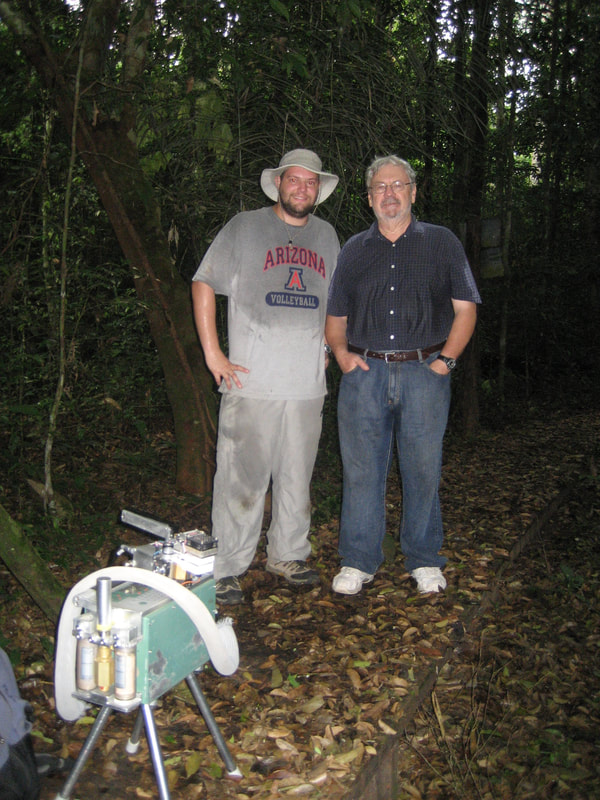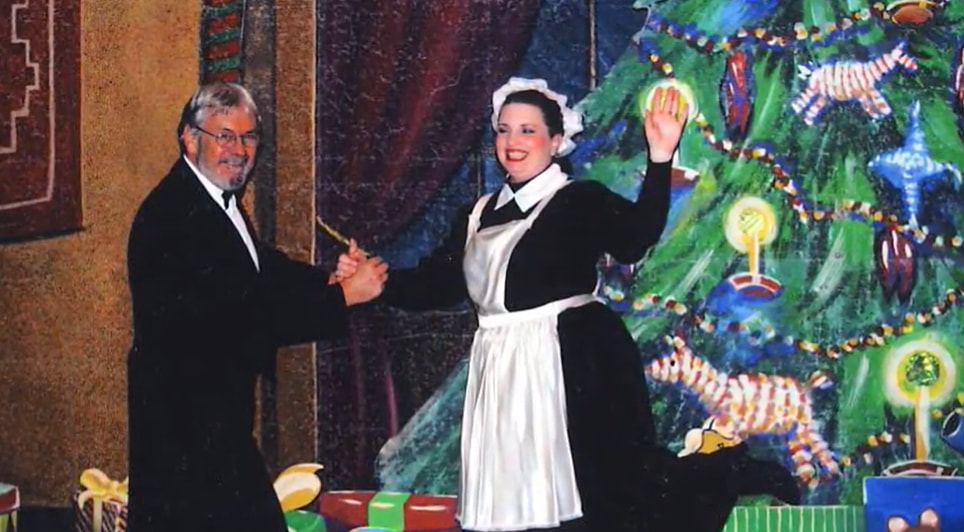This leaf was drafted by Shirley Papuga (co-taught Practical and Applied Hydrometeorology with Jim at University of Arizona) and Rafael Rosolem (Jim’s final PhD student) in his honor.
Jim considered himself a hydrometeorologist - linking climate science and weather prediction with hydrologic science. However, many of us remember Jim for his valuable contributions to the ecohydrology community. For example, Jim was instrumental in the development of Hydra, an early version of what is known these days as the “eddy covariance system” - one of our ecohydrological go-to tools for bridging hydrological and ecological processes. It was this system that enabled some of the early work on energy and water cycles linking eddy covariance data in the Amazon rainforest with land surface models that led to subsequent improvements in Global Climate Models.
What are your undergraduate and graduate degrees in?
Jim received his Bachelors degree with honors in Physics in 1967, a U.S. Master’s equivalent (Dip. Adv. St. Sc.) with distinction in 1968, and his PhD in High-Energy Nuclear Physics in 1971, all from Manchester University.
How did you arrive at working in/thinking about ecohydrology?
It was not long after receiving his PhD that Jim shifted to using the science and mathematics skills he developed studying high-energy physics to address questions in the hydrologic sciences. One of the first topics he tackled was evaporation. In their 1979 paper “Has the Priestley-Taylor Equation Any Relevance to Forest Evaporation?”, Jim with Ian Calder challenged “the indiscriminate use of the Priestly-Taylor hypothesis”, “a simple and easily calculable function of temperature and radiant energy, independent of precipitation and only weakly related to vegetation cover”. They used empirical datasets from two forest ecosystems to argue that vegetation, especially if it is tall, can have a significant impact on evaporative fluxes that are not reflected in the Priestly-Taylor or Penman formulas. This paper has helped set the stage for emphasizing to meteorologists, hydrologists, and water engineers the importance of vegetation in their applications.
What do you see as an important emerging area of ecohydrology?
Even with a lifetime of continuous innovative disciplinary research contributions, probably one of the most important emerging areas that Jim had a major influence on was highlighting the importance of the interface between hydrology and other disciplines. His inclusive and curious approach to learning has helped develop a new generation of interdisciplinary scientists that have moved beyond their established boundaries by enabling them to incorporate hydrologic principles in broadening their thinking.
In 2006, Jim was recognized with the International Hydrology Prize. As part of his response to the award citation Jim stated: “If, as stated in the citation, I have helped to raise consciousness of the need to improve communication between the physical and biological sciences and the human sciences, and of the need for the directed deployment of hydrological understanding in support of societal needs, this is a further source of pride to me.” Our best guess is that Jim would argue that continuing to make progress in bridging hydrology and biology for addressing societal needs is an important emerging area of research.
Do you have a favorite ecohydrology paper? Describe/explain.
It is hard to choose a single paper from Jim’s vast contribution to the scientific community. His knowledge is for example well summarized for hydrologists in Chapter 4 of the Handbook of Hydrology, appropriately called “Evaporation”, or his more recent “Terrestrial Hydrometeorology” book, which became widely considered to be the definitive textbook on the subject. However, for us, the Shuttleworth et al. 1984 paper perhaps best captures the essence of Jim’s work and overall contribution to the community. Here is why:
First, it highlights the pioneering use of eddy correlation measurements for turbulent fluxes estimates in the Amazon rainforest. We are now used to easily accessing data from many flux sites across the whole world. Back in the 1980’s, this technology was still in its infancy, and setting up a field work in the Amazon forest was obviously challenging. Yet, despite all adversities, Shuttleworth et al. 1984 introduced the first 8 ‘golden’ days of measured fluxes from the Reserva Ducke near Manaus, Brazil. Up until then, most of these studies had occurred in temperate latitudes due to “finance and practicality” as stated in the paper. Below is the excerpt from the paper highlighting its key findings which are now well-accepted in ecohydrology:
“In the phraseology of classical hydrology, the experimental situation in which the data presented in this paper were gathered represents 'evaporation from a well-watered crop'. The meteorologist and hydrologist schooled in the concept of potential evaporation might therefore be surprised by the result (given in section 4(b)), that the fraction of incoming radiant energy used in evaporation for a transpiring forest canopy is around 0.7. To the forest hydrometeorologist this result is entirely plausible, and not unexpected (cf. Shuttleworth and Calder 1979). It reflects the fact that transpiring forest canopies exert significant surface control even when water is freely available in the soil.”
Secondly, the paper ends with a proposed working model of daily evaporation for forest surfaces. This reflects Jim’s contributions to both experimental and modeling aspects of hydrometeorology. Contributions like that ultimately led to multi-national collaborative projects such as the Anglo–Brazilian Amazonian Climate Observational Study (ABRACOS) and the Large-scale Biosphere-atmosphere experiment in Amazonia (LBA) projects, both with strong leadership contributions made by Jim.
Finally, the third reason is to highlight Jim’s ability to work internationally and to recognize his pivotal role in providing guidance and support to international colleagues and students, especially to the Brazilian community. Jim has certainly contributed to the career of many international scientists over the decades through his collaborations or by hosting and advising international students. Those who have worked closed with Jim always recognize his kindness, friendliness and supportive role as a collaborator, mentor, or advisor.
What do you do for fun (apart from ecohydrology)?
It is clear to us from his words and actions that Jim was a devoted family man. He referred to his wife Hazel as his best friend and acknowledged her whenever he was honored with an award. Jim supported his four sons in football [soccer] and later his daughter’s ballet. In fact, Jim became so involved that he actually became part of the Tucson Regional Ballet performing for several years in the Southwest Nutcracker, which many of us were fortunate to be able to witness! After his retirement he rolled up his sleeves and was actively involved in Habitat for Humanity - it seemed natural for Jim to serve his community, no matter the context. We will remember Jim as a smiling face, never too busy to sit down and share a caipirinha with us. Saúde Jim!
2001 AGU Hydrology Section Award
2002 EOS Article Featuring Jim
2006 IAHS, UNESCO, and WHO International Hydrology Prize Citation and Response
2009 University of Arizona Regents’ Professor Tribute (Video)
2011 AGU Langbein Lecture (Video)
2013 AMS Robert E. Horton Lecturer in Hydrology
2014 AGU Robert E. Horton Medal
2015 EOS Article Featuring Jim
2020 Ameriflux Memoriam - Remembering Professor Jim Shuttleworth
2020 History of Hydrology Biography
2020 Jim Shuttleworth Memorial
2020 Dec 29 Tucson Memorial Service (Video)


 RSS Feed
RSS Feed